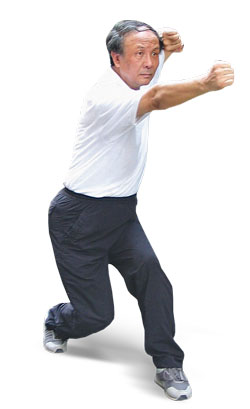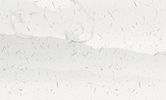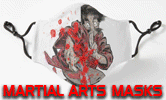By William Acevedo, M.Eng., Mei Cheung, B.A., and Brenda Hood, Ph.D.
 One of the most influential Chinese martial arts scholars in China today is without a doubt Professor Ma Mingda, a history professor at Jinan University in the city of Guangzhou, Guangdong Province. Most of the information about his work has come through the writings of Mr. Stanley Henning, M.A.1, an independent scholar who has been a very generous mentor to the author of this article.
One of the most influential Chinese martial arts scholars in China today is without a doubt Professor Ma Mingda, a history professor at Jinan University in the city of Guangzhou, Guangdong Province. Most of the information about his work has come through the writings of Mr. Stanley Henning, M.A.1, an independent scholar who has been a very generous mentor to the author of this article.
We originally went to Guangzhou to visit my wife's family, but could not pass up an opportunity to try to meet Professor Ma. We knew Professor Ma to be a very busy person and any interview was a long shot; however, we were able to contact him through one of his students and were pleasantly surprised at how easily we set up an interview for the very next day.
Mrs. Ma answered the door and showed us into their home, a small yet cozy apartment. The studio was filled with books covering topics such as sports, Chinese classics, martial arts and calligraphy works. Mrs. Ma went to announce our arrival, and shortly afterwards a tall and powerfully-built gentleman, with the presence of an ancient warrior, made his entrance. Professor Ma certainly gave a first impression quite the opposite to what one would expect of a university professor.
After introductions we proceeded to the interview, but not before Mrs. Ma kindly indulged us with tea and snacks.
The Ma Family
Professor Ma was born in 1943, and started his martial arts training at the tender age of six learning small baji (a routine that teaches the basics for power development) from his third brother; his siblings Yingda, Xianda (who served as consultant for the film cult classic THE SHAOLIN TEMPLE, starring a young Jet Li), and Lingda, are masters in their own right. His father Ma Fengtu and uncle Ma Yingtu were his influential teachers; his father encouraged him to pursue graduate studies along with his martial arts training. The Ma family moved to the Cangzhou area (a region known as the martial village) sometime during the early Qing Dynasty2.
In 1927, General Zhijiang Zhang opened the Central Martial Arts Academy, Zhongyang Guoshu Guan, a project aimed to strengthen the nation's citizens through the practice of Chinese martial arts. Ma Yingtu not only served as martial arts instructor but also as one of the organizers of the Academy's curriculum and structure. Later he turned his attention to researching fighting techniques, dui kang. Ma Fengtu also contributed ideas for the Martial Arts Academy in Nanjin. His efforts were focused on creating similar structures in Gansu and Qinghai.
Professor Ma taught martial arts for several years while in university (with his father encouraging him to pursue history instead of a degree in sports) before dedicating himself to his research interests, divided into three major areas: sports, Wushu history, and tongbei studies. The latter is a concept first mentioned during the Ming dynasty by General Qi Jiquan, that?loosely translated?is to put many things together and make them as one by taking short and long range styles and blend them into a cohesive unit according to certain principles. Ma's tongbei studies includes the practice of bajiquan (Eight Extremes Boxing), piguaquan, Chopping Hands Boxing), fanzi (Tumbling Boxing), chuojiao (Poking Foot Boxing), and short and long weapons skills. In sum, tongbei means to be prepared and ready for anything. Professor Ma made clear that this concept had not originated within the Ma family. His father's teacher, Shi Ye, was the first to discuss it, and according to Professor Ma the origins of tongbei might even be traced to Qi Jiquan. It is interesting to mention that Professor Ma is the head of the Bruce Lee Research Association. He might be the only scholar in China who thinks that people should go back and study some of the theories set forth by Bruce Lee.
Martial Studies in the Ming Dynasty
Chinese martial arts development peaked during the Ming Dynasty, a historical period that was a turning point in Chinese history. At that time China began to assimilate certain foreign influences (for example, foreign weapons) that caused a change in the way people looked at the practice of the martial arts, transforming them from skills used in warfare into health cultivation and metaphysical practices. These foreign ideas influenced personalities like Qi Jiquan, whom Professor Ma considers one the greatest Chinese historical figures. The general tried to incorporate the new weapons into the native martial practices of his time in ways never before seen in China. During the Japanese invasion of Korea in the 28th year of the Wuanli period of the Ming Dynasty (1592-1593), none of the Chinese troops could stand against the invaders but Qi Jiquan's, which scored numerous victories against the Japanese and Northern invaders. These troops carried their martial traditions into Korea and Japan.
Professor Ma has made several trips to these countries in order to bring back the traditions that left China during the Ming Dynasty. For example, in Japan he found valuable information on Ming General Yu Dayou, another influential military figure. Currently Professor Ma is writing a paper about these discoveries, preparing a complete biography of General Qi Jiquan, and working on a project to translate some of his work into English. In Professor Ma's view, traditional Chinese martial arts practice in China and Taiwan should resemble martial arts practice during the Republican Period, an opinion that might only be expressed by him and which was the topic of a paper he wrote titled, "Thoughts and Suggestions on Building the System of Chinese Traditional Sports" (Shi Lun Zhong Guo Min Zu Ti Yu Xi De Chong Xing Jian Gou), which attracted the attention of high-level officials.
During the Ming Dynasty, music, medicine, martial arts and other elements of Chinese culture were highly developed through the influences already discussed. For Professor Ma, the more interactions among cultures and schools of thoughts that are added into the cultural mix of a nation, the more development can happen on many levels. When a country locks down onto itself the result is a decline in all aspects of its society. Martial arts are a cultural treasure that belongs to mankind, and different countries have their own traditions. The Ming dynasty martial arts developed so well due to such stimulating outside traditions. More recent examples of such interactions include the introduction of sports like western boxing, and?an almost unknown anecdote?the influence of Japanese judo on Mao's ideology in the 1930's.
Another interesting discussion with Professor Ma was that in his opinion Chinese martial arts were influenced to a certain degree by the different religious schools of thought such as Buddhism, Islam and Christianity (in the last century). He acknowledged that many of the stories that circulate in modern folklore about these influences are in the best of cases unverifiable. In the case of Islam, in the last 200 years a number of people (some of whom were members of his own family) had been influential. Many came to China as professional soldiers during the Ming Dynasty and by the Qing Dynasty the state of affairs changed such that these people could not make a living as soldiers and instead became martial arts instructors. In the case of Buddhism, Buddhist philosophy emphasized exercising the body, in contrast to Taoism, which does the opposite. Unfortunately time constraints didn't allow us to elaborate on these points.
The Republican Period
For many years people in China shifted their attention to nourishing their bodies. Through Chinese history several periods of famine made the regular folk spend a great deal of time in search of food, which explains the incredible variety in the Chinese diet. This trend changed to a focus on money and wealth, which is why very few in the country are researching Chinese martial arts (among other neglected cultural artifacts). An example of this situation is Tang Hao (??, 1897 ? 1959), a pioneer in Chinese martial arts scholarly research, for whom Professor Ma has the utmost respect. Tang was a very good friend of Ma's uncle Ma Yingtu (???); even Professor Ma's brother Ma Xianda had the opportunity to make his acquaintance. However, Professor Ma was still quite young and had very little contact with him. So far no one has organized and edited Tang's contributions to martial arts scholarship. Professor Ma has spent 20 years of his life doing what he can in this area, which is not an easy task if we consider that he also travels extensively to other countries looking for old documents in order to bring them back to China. He is a very active lecturer besides his teaching responsibilities, and hopes to publish his findings and make them available to everyone in the near future.
Tang Hao's research was very controversial in his time, which is not surprising if we considered that he was not only moving away from tradition but also making ground-breaking discoveries never before seen in China. However, one of the problems Tang Hao and others of his time faced was that they were heavily influenced by Marxist ideology, the filter through which they viewed their work. Professor Ma has been able to rise above such limitations, due to his at times difficult position as independent scholar and the access he has had to sources not available to Tang and his contemporaries.
During the Republican period, the Chinese martial arts were anything but a cohesive organization. Several entities born during this time also created their own programs, one example being the Chin Woo Athletic Organization. Professor Ma explained that the Chinese martial arts of the period had the following events in which the martial artist had to prove his/her skills: taolu (forms practice), shanshou (scatter fists), changbing (long weapons), duanbing (short weapons), shuaijiao (wrestling), shejian (archery), dangong (shooting), tijian (shuttlecock), celi (strength events), etc. In 1935 a national competition was held at which important figures served as judges, including Tang Hao, who refereed the boxing contests. During this tournament the participants competed against each other in the above mentioned events. Professor Ma considers it as one of the best athletics meetings in modern China's history, not only for the type of competitions that reflected the traditional martial ideals but also because it lacked any political agenda. This event was a pure athletic meeting without the politics that plague modern day events. After 1949 this traditional approach was lost, due to the political changes that took place in China during that period.
Changes to the Current State of Chinese Martial Arts
Currently there is a pervasive simplification of China's cultural treasures that worries Professor Ma, not only in the martial arts, but in Chinese language and Chinese medicine. Many old books are being neglected and old traditions forgotten. As for martial arts, wushu and sanda practice do not represent traditional martial arts. Professor Ma advocates using the term shanshou instead of sanda (which lacks a sense of identity and traditional Chinese strategies in its practice). He also advocates the introduction of a new set of formalities for these fighting bouts, replacing the popular way to salute an opponent (with fist hidden by opposite palm), the main reason being that this form of salute in fact originated in secret societies, triads and mafia-type organizations during the Qing Dynasty. In its place contestants should use the traditional way of placing the hands with the palms open facing the person doing the salute, to symbolize that his/her opponent is at a higher position that him/herself. He also recommends, instead of the term wushu, the use of the term, Wuxue (Martial Arts Studies), which includes not only the physical aspect of these arts but also the study of their roots.
There are three general aspects in traditional Chinese martial arts competitions: empty hand, short and long weapons, and sparring, with the last two being eliminated from modern sanda tournaments. The stages of traditional Chinese martial arts training can be divided in four steps: basic forms studies; 2-person sets with a cooperative partner that help a student understand how to use the techniques (for example, baji duida [????] a set within the bajiquan curriculum); regulated fighting (these steps have been removed from wushu and sanda practice due to the fact that neither one is a prerequisite for the other); and finally, weapons practice.
However, Professor Ma believes that the fighting aspect should not be overemphasized, because it will only cater to a small percentage of the population. In his opinion, for the Chinese martial arts to improve their current state there must be changes coming from the powers that be.
There have been some positive advances in this area that have enabled him to gain respect for his position. At the time of this interview, Professor Ma was preparing himself for an important gathering on August 5 in the city of Ulumuqi, to meet with other scholars on changes to the Chinese martial arts, and on August 15 he was to engage with certain political personalities in what would be a very influential discussion regarding changes to the current organizational structures of the sport after the 2008 Olympics. If everything goes according to plan, the state of Chinese martial arts will improve. Professor Ma is also a consultant to the Shaolin Temple in matters related to their martial arts, which are currently in a very poor state.
Bajiquan Practice
One of the core elements of tongbei studies, bajiquan, also faces great challenges. At the moment the different baji traditions are chaotic at best due to politically motivated feuds. For this reason Ma has kept away from any political organization in order to preserve his position as an independent scholar. The practice of bajiquan is simple; however, some lineages are including superfluous techniques in their curriculums, changing the original forms and making exaggerated claims about their history?"water injected into pork meat to make it heavier" (Ru Shui Zhu Rou).
Through the Ma family's efforts bajiquan became very popular in Shanxi, Ningxia, and Xinjiang, making it one of the most practiced styles in the Northern provinces. The influence of the Ma family also spread to Taiwan by one of the first graduates of the Central Martial Arts Academy in Nanjin, Li Yuan Zhi, who was a student of Ma Yingtu.
Professor Ma's great grandmother was from the Wu family, another famous family branch within the bajiquan lineage. The Ma brothers' father and uncle combined bajiquan and piguaquan, as well as the use of the Liu He Da Qiang (giant spear) from the Mengcun and Luotan village branches into one, thus creating the basic core of the tongbei martial arts studies.
The tongbei approach generally takes two years before practical applications are taught and three to five years to complete the whole process. In the Basic level, bajiquan is the first style to be taught to a student due to its simplicity (a very different view from other lineages that consider this style as something almost secret, only available to a selected few). Finally, weapons practice is of great importance if the student is to achieve higher levels of martial skills. In tongbei studies practicing with the daqiang requires that the body works as a cohesive unit in order to handle it properly (which is not surprising when we consider that this weapon is over 10 feet long).
Final Thoughts
After discussing many topics on Chinese martial arts, we had to ask a final question: how could a fan of these arts find a good teacher? He gave us the following pointers. Due to the fact that there are no standards available which can quantify a teacher's knowledge of the arts, it is difficult to really know if a potential teacher truly understands tradition. However, there are some things that a student can do. First, research the prospective teacher's background, using his/her lineages as a starting point. Despite the fact that social structures in China are complicated there are a few families with unbroken lines that still represent the original martial concepts. Ma also recommends relying on one's intuition, since as human beings we are all the same. The martial arts are not something mysterious and if a teacher presents them this way that is a sign of trouble.
Unfortunately these challenges have contributed to weakening the state of Chinese martial arts to the point that they have almost no market in countries like Japan. Professor Ma was a recognized athlete when he was a teen; however, he maintained a cool detachment towards the study of martial arts and he would like to see the same in other teachers. Unfortunately, making a living as a martial artist is not easy; many teachers are willing to compromise their ethics in order to attract students. Finally, martial arts should incorporate theoretical and historical studies into their practice in opposition to the current trend that separates them. The Ma tongbei concepts and Professor Ma's passion for the historical background of Chinese martial arts are being carried on by his son Ma Lianzhen and his disciples, who will ensure that these traditions survive the Twenty-First Century.
Click here for Feature Articles from this issue and others published in
2008 .
About
William Acevedo, M.Eng., Mei Cheung, B.A., and Brenda Hood, Ph.D. :
Bibliography
![]() Print Friendly Version of This Article
Print Friendly Version of This Article














